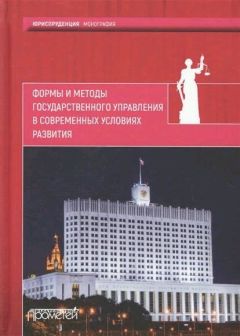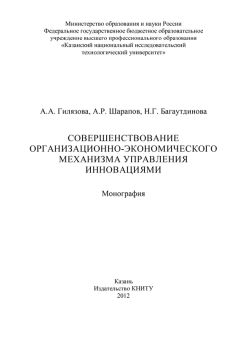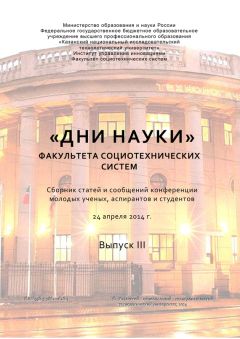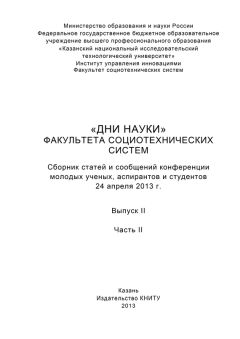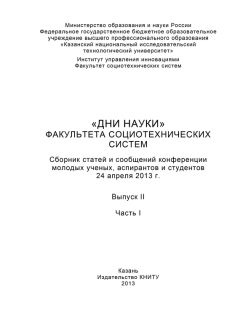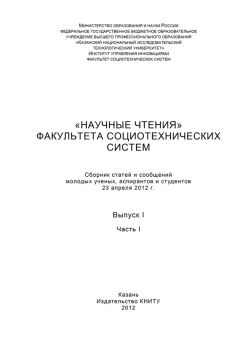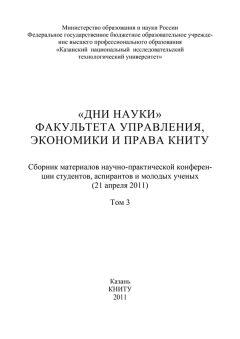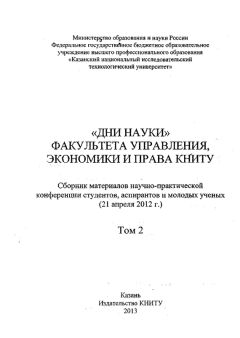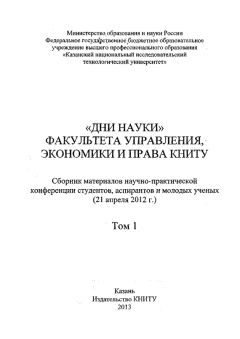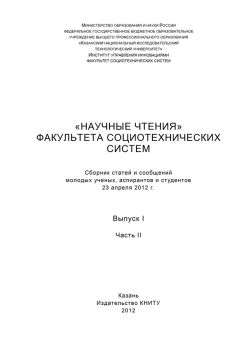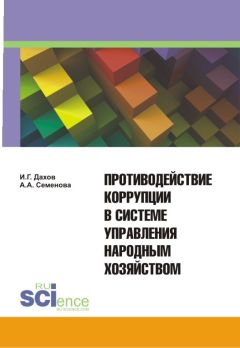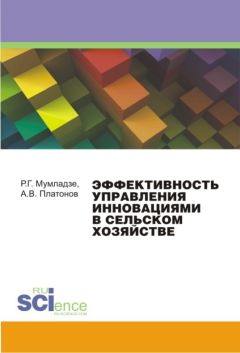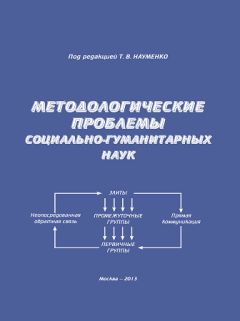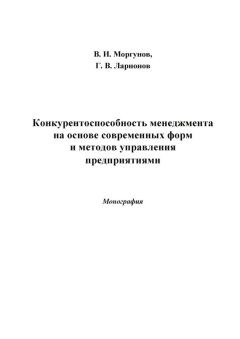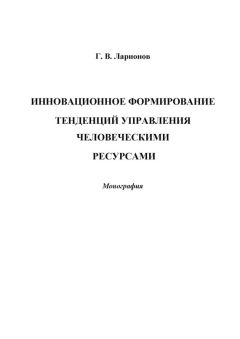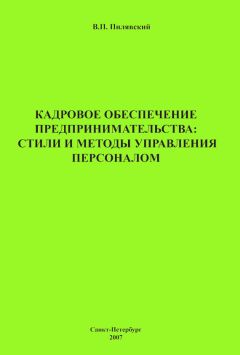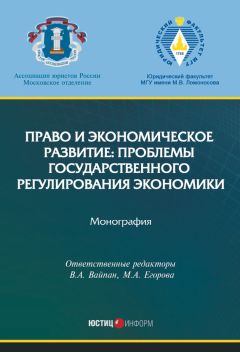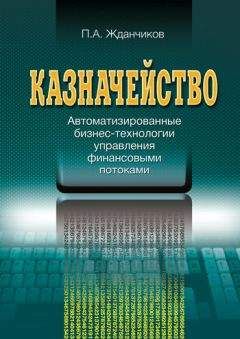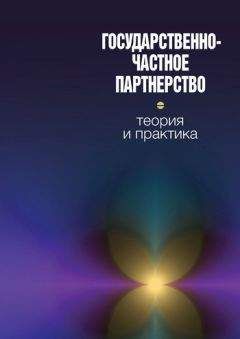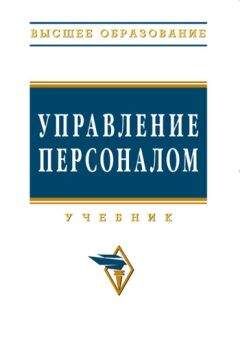Коллектив авторов - «Дни науки» факультета управления, экономики и права КНИТУ. В 3 т. Том 2
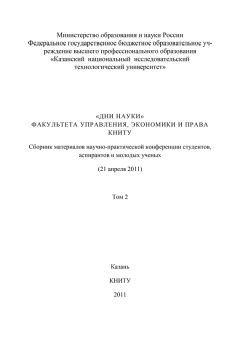
Все авторские права соблюдены. Напишите нам, если Вы не согласны.
Описание книги "«Дни науки» факультета управления, экономики и права КНИТУ. В 3 т. Том 2"
Описание и краткое содержание "«Дни науки» факультета управления, экономики и права КНИТУ. В 3 т. Том 2" читать бесплатно онлайн.
В настоящий сборник вошли материалы работ студентов, аспирантов и молодых ученых Казанского национального исследовательского технологического университета кафедр экономики и управления на предприятиях, менеджмента и предпринимательской деятельности, государственного, муниципального управления и социологии, правоведения, логистики и управления, химической кибернетики, экономики и управления на предприятиях пищевой промышленности ВШЭ и др.
Рекомендована методика оценки экономической эффективности комплексного использования, сущность которой сводится к следующему:
а) экономическая граница целесообразности использования каждого из ценных компонентов сырья в отдельности при комплексной его переработке определяется из условия окупаемости только прямых дополнительных затрат, связанных с организацией извлечения оцениваемого компонента, без учета какой-либо части косвенных расходов;
б) экономическая эффективность комплексного использования многокомпонентного сырья в целом определяется из условия окупаемости общей суммы прямых и косвенных затрат на добычу и комплексную переработку сырья при учете только тех компонентов, извлечение которых экономически оправдано в соответствии с принципом, изложенным в пункте "а";
в) целесообразность комплексного использования сырья считается экономически оправданной (доказанной) только при одновременном выполнении условий "а" и "б".
К числу основных направлений использования отходов потребления продукции, выпускаемой компаниями НГХК, относятся:
Переработка отработанных нефтепродуктов:
– масла индустриального отработанного (обводненного)
– отходов автозаправочных станций и нефтебаз – смеси отработанных нефтепродуктов (масла и топлива с большим содержанием смол)
– отработанного бурового раствора, нефтешламов с извлечением углеводородных компонентов и использованием в качестве сырья в процессах гидрокрекинга на НПЗ для получения товарных нефтепродуктов.
Глубокая переработка и вторичное использование термопластичных и термореактивных полимерных материалов синтетической химии.
Переработка отходов из пластмасс:
– переработка с получением гранулированных пластиков высокой чистоты (рециклатов)
– переработка с получением новых полимерных материалов;
– термический рециклинг полимерных отходов с получением полезных продуктов неполимерной природы
Переработка отходов из реактопластов (резиновой крошки и других отходов резинотехнических изделий):
– переработка резиновых невулканизированных и вулканизированных отходов
– переработка резинотканевых вулканизированных и невулканизированных отходов
Текстильные волокна, остающиеся после регенерации резинотехнических изделий
Переработка изношенных автошин:
– термическое растворение автошин с использованием в качестве растворителя нефтяного остатка (гудрона)
– применение термического пиролиза с использованием полученной жидкой фракции в качестве добавок в резины или пластмассы и переработкой твердой фракции в активированный уголь высокой адсорбционной способности;
– использование изношенных шин в качестве топлива для получения тепла и электроэнергии с возможным применением установки газификации.
INTEGRATED AND COMPLEX USE OF RAW MATERIALSThe modern chemical industry is based on the integrated use of raw materials, which increases efficiency and prevents pollution and industrial waste.
The need for integrated management of natural resources is predicated on the one hand, the increasingly high rates of growth in industrial production, environmental pollutants, and on the other – the need to conserve their usage as the main mineral resources are limited and their prices are increasing continuously. In turn, prices increases the introduction and development of low-waste and waste-free production, extending the limits of their economic viability.
Sources of waste are:
• impurities in raw materials, i.e. components that are not used in this process to produce the finished product;
• incompleteness of the process, the balance of useful product in the feed;
• adverse reactions, leading to the formation of unnecessary materials.
Management of complex and integrated use of raw materials reduces the amount of underutilized substances; increases the range of finished products, to produce new products from that part of the raw materials, which previously went to waste.
Integrated use of valuable constituents of raw materials is possible only at a certain stage of development according to the rates of technological progress within the organisation.
The main specific feature of the complex production lies in the fact that the high economic efficiency of the complex use of raw materials in general is not indicative of the efficiency of extraction of each of the recoverable valuable components. High efficiency preparation of several or even one of the components may overlap the losses from the extraction of the remaining components of raw materials. On the other hand rejection of extracting valuable components of complex materials, in some cases can translate into high production unprofitability. It is therefore necessary not only to the overall assessment of complex use of raw materials in general, but a differentiated assessment of the economic efficiency of obtaining each of the valuable components of raw materials separately, i.e. definition of a rational range of valuable components of the raw materials to be retrieved or recovered.
Recommended method of estimating the cost-effectiveness of integrated management, the essence of which is as follows:
a) economic feasibility of using the boundary of each of the valuable components of raw materials separately with its complex processing is determined from the return only direct additional costs associated with the organization of component extraction, excluding any portion of indirect costs;
b) the economic efficiency of integrated multi-component material is generally defined in terms of return on total direct and indirect costs of production and comprehensive processing of raw materials, taking into account only those components extraction which are economically feasible in accordance with the principle set forth in paragraph "a";
c) the appropriateness of the complex use of raw materials is considered to be economically viable (proven) only if all of the terms "a" and "b" are fulfilled.
Some of the directions of Oil Gas Chemical Company, which use waste of productions are:
Recast of waste oil products:
– Industrial oil waste (cut)
– Waste gas stations and oil depots
– Mixtures of used petroleum products (oils and fuels with high content of tar)
– The spent drilling mud, sludge from the extraction of hydrocarbon components can be used as a feedstock in the process of hydro cracking in oil refineries to produce commodity petroleum products.
Deep Recycling of thermoplastic and thermoset synthetic polymer.
Recycling of waste plastics:
– Processing to produce high-purity granular plastics
– Processing to produce new polymer materials;
– Thermal recycling of polymer wastes to produce useful products of non-polymer nature
Waste treatment of reagents (crumb rubber and other waste rubber products):
– Processing of uncured rubber and vulcanized waste
– Recycling of vulcanized rubber and uncured waste
Textile fibers remaining after the regeneration of rubber products
Recycling of worn tires:
– Thermal dissolution of tires, using as a solvent, oil residue (tar)
– The application of thermal pyrolysis recycling
– The use of scrap tires as fuel to generate heat and electricity as opposed to the use of gas.
Аюпов Р
Copyright-based industries are one of the main powers pushing the economy to innovative and technological development. Creative economy is a widely known term first used by John Hawkins. He divided creative economy to fifteen creative industries, the product of these industries is intellectual property. Creative industries nowadays constitute 12 % of the annual GDP in the countries of Western Europe and North America. We consider copyright-based industries as one of the most powerful drivers of national economy, because the rate of economic growth of these industries is four times higher than general economic growth rate.
In the new era of the dominating creative industry creative class takes major social role instead of working class, according to the class theory of sociologist Richard Florida. Russia takes the second place after the USA in the rate of employment in creative industry. Florida also argues that, as globalization makes the world effectively smaller, in the near future there will be 40 mega-regions, within which economic growth will be concentrated.
Within the promotion of creative economy copyright protection must be considered. There are two aspects of protecting copyrights: legislation and law enforcement. In regards to legislation, laws are usually made properly and successfully deliver overall defense to copyrights. Law enforcement, on the other hand, presents more trouble to the defense of copyrights. Punishment for breaking copyrights simply cannot be severe enough to stop copyright violation. Most cases in Russia do not result in a large enough fine to make people respect copyrights. Consequently, there is high level of piracy permeating the multimedia market. According to numbers given by GfK Group Russian multimedia products loses 80 % of its annual profit. For United States the situation is much better; nevertheless, according to the Institute for Policy Innovation, the American economy loses $26 billion every year, due to illegal production and use of multimedia products.
On the other hand, copyrights are admittedly not always good for creative industries. For example, in the filmmaking industry Hollywood doea not dominate the industry as would be expected. Though Hollywood is highest earning institution of the motion picture industry, Nigeria, India and China produce over 75 % movies in the world. Albeit, the quality of these movies is not as good as American, this example makes us doubt the importance of revenue in the creative industry. The artist does not always care about box office numbers as much as he cares about the whole idea of his creation to be delivered properly. One of the most famous artists if the 19th century postimpressionist Vincent Van Gogh didn’t sell any of his paintings, because he never found his work to bear a price. This particular example is one of many for the arts. Countless free performances, charity activities and others serve as example of the artist’s initiative not for his own profit, but for higher ideas. The creative industry highly appreciates the ideological aspects of their production. This is also beneficial for creating the right market image for the product. For example, British rock band Radiohead uploaded their last album to their official web site and let their fans download it for free, leaving the option to donate as much as they wish. As a result "In Rainbows" became the most commercially successful record of the decade, even though customers were allowed not to pay at all. This example is now a role model for countless artists around the world.
Fighting piracy cannot include only more stringent punishments for perpetrators but also other alternatives. Proper price-making policy with more customer involvement and campaigning for the purchase of legal products instead of counterfeit.
Russia is potentially one of the principle countries for the developing the world creative economy. It has high level of creative capabilities among its population.
Данилова Р.В
Problems of development of thermal processing of wood are considered. For improvement of quality of finished goods the way of processing of the thermomodified wood and installation for its realization is offered. The information on the business plan is resulted, the schedule of break-even of manufacture is constructed.
Древесина как материал характеризуется многочисленными положительными свойствами, что позволяет использовать ее в различных отраслях народного хозяйства. Однако два показателя снижают ее конкурентоспособность по сравнению с металлами и синтетическими материалами – это относительно малый срок эксплуатации и сравнительно малая стабильность формы. Решающим фактором в пригодности изделий из древесины является влияние грибковой инфекции вследствие естественного содержания в ней влаги [1].
Однако технологии не стоят на месте, и сейчас применяется много инновационных методов защиты древесины. Эти методы имеют целью решение двух проблем – уменьшение риска развития грибка и понижение гигроскопичности древесины. Одним из наиболее перспективных методов обработки древесины на современном этапе является термомодифицирование. Метод заключается в нагревании древесины до температуры 150 – 270ºС. Для всех способов термической модификации общей чертой является потемнение естественных цветов пропорционально росту температуры, времени обработки и влажности самой древесины.
Подписывайтесь на наши страницы в социальных сетях.
Будьте в курсе последних книжных новинок, комментируйте, обсуждайте. Мы ждём Вас!
Похожие книги на "«Дни науки» факультета управления, экономики и права КНИТУ. В 3 т. Том 2"
Книги похожие на "«Дни науки» факультета управления, экономики и права КНИТУ. В 3 т. Том 2" читать онлайн или скачать бесплатно полные версии.
Мы рекомендуем Вам зарегистрироваться либо войти на сайт под своим именем.
Отзывы о " Коллектив авторов - «Дни науки» факультета управления, экономики и права КНИТУ. В 3 т. Том 2"
Отзывы читателей о книге "«Дни науки» факультета управления, экономики и права КНИТУ. В 3 т. Том 2", комментарии и мнения людей о произведении.






